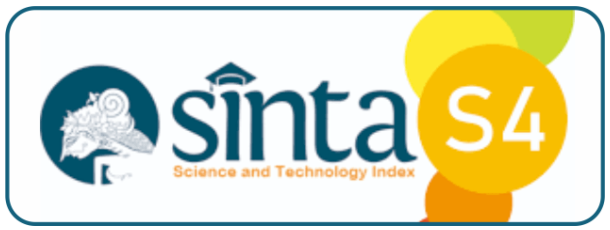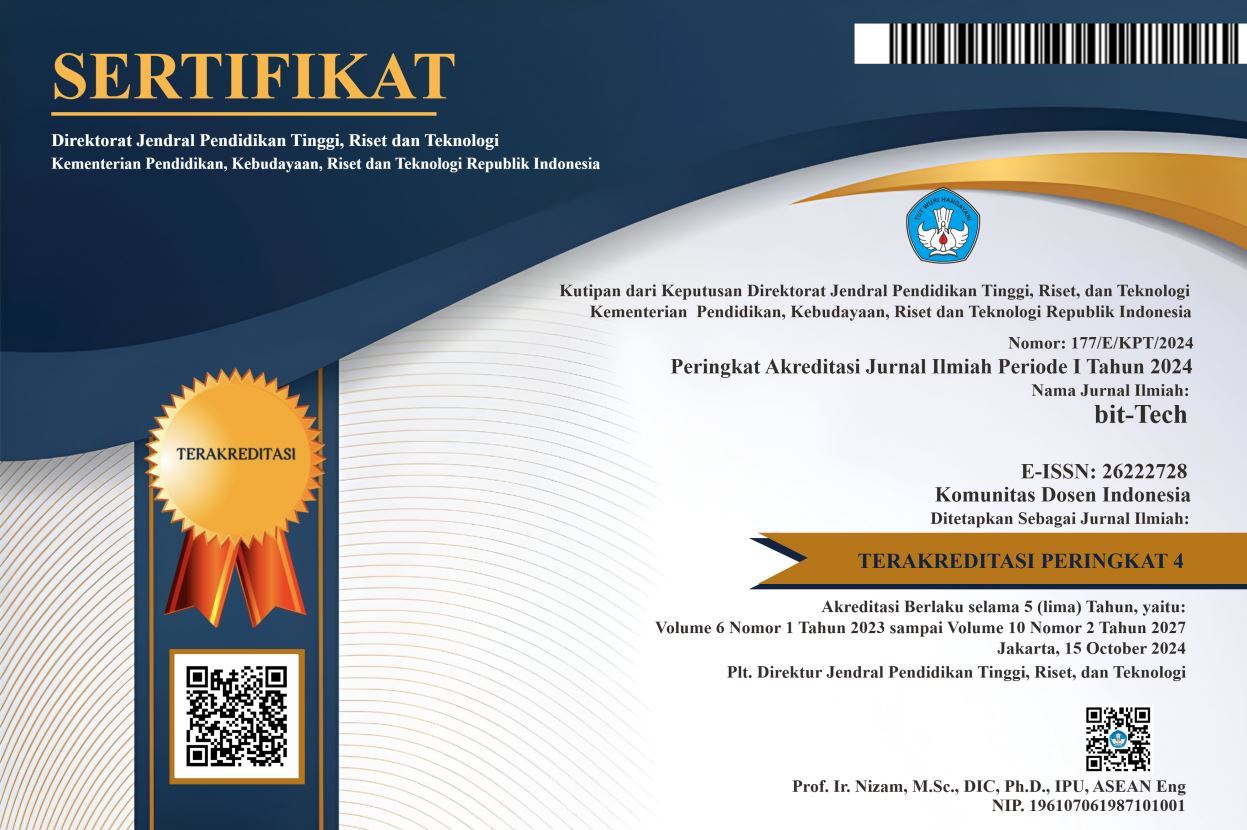Optimizing Student Housing Search with MAUT-Based Dorm Finder Web System
DOI:
https://doi.org/10.32877/bt.v6i2.1053
Keywords:
Dorm Finder , MAUT, Optimizing Search, Student Housing, Web System
Abstract
In response to the challenges faced by students in finding suitable temporary accommodations, this study introduces 'Dorm Finder,' a web-based information system utilizing Multi Attribute Utility Theory (MAUT). This innovative platform is designed to assist students in locating boarding houses that align with their preferences, taking into account amenities, location, and rental prices. MAUT allows for a nuanced and personalized decision-making process, enabling students to assign importance to various attributes, simplifying their search. The study also addresses the growing demand for efficient housing solutions, as the number of university students has increased by 4.02% in 2022. The research extends to evaluating the system's impact, aiming to support students in their search for accommodations that meet their specific needs based on key attributes. This evaluation will inform the development of more effective MAUT-based systems in the future. The use of MAUT in this context, with its demonstrated effectiveness in decision-making processes, reinforces the potential efficacy of the Dorm Finder system. The 'Dorm Finder' system offers a tailored platform that provides comprehensive information and customizes the search experience for individual student preferences. The system's design and implementation ensure an intuitive and efficient user experience through strategic interface design, including color selection, layout, and interactivity, facilitating a straightforward and enjoyable user journey. The system’s potential to revolutionize the way students locate and select accommodations is a significant contribution to the digitalization of the housing search sector.
Downloads
References
A. Rachmawati, “Membangun Informasi Layanan Umum Rumah Kos Melalui Aplikasi Berbasis Web,” JURNAL ILMIAH FIFO, vol. IX, no. 2, 2017, [Online]. Available: http://pelita.or.id/baca.php?id=76299
M. Ma’Mur, L. Lia, and A. Hafiz, “Metode Extreme Programming Dalam Membangun Aplikasi Kos-Kosan Di Kota Bandar Lampung Berbasis Web,” Jurnal Cendikia, 2019.
I. Soleh Marifati, “Rancang Bangun Sistem Informasi Kos-Kosan Di Purwokerto Berbasis Web,” 2023. [Online]. Available: http://jurnal.bsi.ac.id/index.php/imtechno
T. Imandasari, A. P. Windarto, and D. Hartama, “Analisis Metode MAUT Pada Pemilihan Deodorant,” in Seminar Nasional Teknologi Komputer & Sains (SAINTEKS), 2019.
dataindonesia, “Jumlah Mahasiswa Indonesia.” Accessed: Nov. 13, 2023. [Online]. Available: https://dataindonesia.id/pendidikan/detail/jumlah-mahasiswa-indonesia-sebanyak-932-juta-orang-pada-2022
J. Sundari and D. Arumaryawan, “Sistem Informasi Geograpfis dengan Google Map Untuk Pencarian Rumah Kost,” INOVTEK Polbeng-Seri Informatika, vol. 3, no. 1, pp. 1–8, 2018.
D. Gunawan and E. C. Nugroho, “Sistem informasi sewa rumah kost dan rumah kontrakan berbasis web di surakarta,” Informatika, vol. 2, no. 1, 2015.
E. Satria, N. Atina, M. E. Simbolon, and A. P. Windarto, “Spk: Algoritma Multi-Attribute Utility Theory (Maut) Pada Destinasi Tujuan Wisata Lokal Di Kota Sidamanik,” CESS (Journal of Computer Engineering, System and Science), vol. 3, no. 2, pp. 168–172, 2018.
K. H. Wahyu and E. N. Cahyo, “Sistem Informasi Rumah Kost Berbasis Android Di Wilayah AUB Surakarta,” Jurnal Ilmiah Go Infotech, vol. 22, no. 2, 2016.
D. Indradi, Home Ideas Rumah Kos. Griya Kreasi, 2018.
K. Mwita, “Factors to consider when choosing data collection methods,” International Journal of Research in Business and Social Science (2147- 4478), vol. 11, no. 5, pp. 532–538, Jun. 2022, doi: 10.20525/ijrbs.v11i5.1842.
V. Braun, V. Clarke, E. Boulton, L. Davey, and C. McEvoy, “The online survey as a qualitative research tool,” Int J Soc Res Methodol, vol. 24, no. 6, pp. 641–654, 2021, doi: 10.1080/13645579.2020.1805550.
J. de V. Mohino, J. B. Higuera, J. R. B. Higuera, and J. A. S. Montalvo, “The application of a new secure software development life cycle (S-SDLC) with agile methodologies,” Electronics (Switzerland), vol. 8, no. 11, 2019, doi: 10.3390/electronics8111218.
A. N. Fitriah, E. L. Hadisaputro, and E. Setyaningsih, “Evaluasi Sistem Informasi Dapodik Pada SDN 023 Penajam Paser Utara Mengunakan Metode Usability Testing,” JURIKOM (Jurnal Riset Komputer), vol. 9, no. 2, p. 456, Apr. 2022, doi: 10.30865/jurikom.v9i2.4086.
I. Taufik, C. N. Alam, Z. Mustofa, A. Rusdiana, and W. Uriawan, “Implementation of Multi-Attribute Utility Theory (MAUT) Nethod for Selecting Diplomats,” IOP Conf Ser Mater Sci Eng, vol. 1098, no. 3, p. 032055, Mar. 2021, doi: 10.1088/1757-899x/1098/3/032055.
Downloads
Published
How to Cite
Issue
Section
License
Copyright (c) 2023 bit-Tech : Binary Digital - Technology

This work is licensed under a Creative Commons Attribution-ShareAlike 4.0 International License.
I hereby assign and transfer to bit-Tech all exclusive copyright ownership rights to the above work. This includes, but is not limited to, the right to publish, republish, downgrade, distribute, transmit, sell, or use the work and other related materials worldwide, in whole, or in part, in all languages, in electronic, printed, or any other form of media, now known or hereafter developed and reserves the right to permit or license a third party to do any of the above. I understand that this exclusive right will belong to bit-Tech from the date the article is accepted for publication. I also understand that bit-Tech, as the copyright owner, has sole authority to license and permit reproduction of the article. I understand that, except for copyright, any other proprietary rights associated with the work (e.g. patents or other rights to any process or procedure) must be retained by the author. In addition, I understand that bit-Tech permits authors to use their papers in any way permitted by the applied Creative Commons license.


 DOI :
DOI :
 Abstract views: 757
/
Abstract views: 757
/  PDF downloads: 437
PDF downloads: 437











